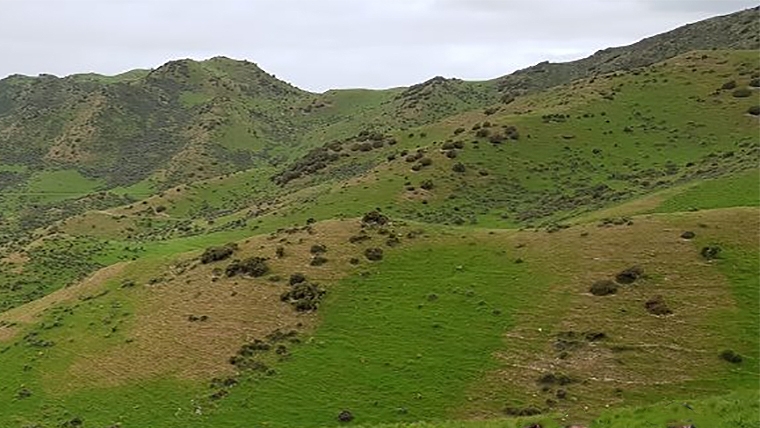
This week North Canterbury farmer Stuart Fraser discusses the current season and some of the challenges facing farmers currently.
Fraser farms a 2850 hectare sheep and beef operation on the south bank of the Hurunui River overlooking the Amuri Basin. He returned home five years ago from Australia where he was working as a diesel mechanic, and has since taken over the management of the family farm and operates in an equity partnership capacity.
They are a breeding and finishing farm running 5,500 and a half mixed aged ewes, 2000 hogget’s, 400 mixed aged cows and they finish 800 R1 and R2 steers with all their progeny finished on 300 hectares of irrigated flats. He farms with his wife, three children and two full time staff, along with his father who occasionally helps out when he can.
He says that this autumn in North Canterbury has been one out of the box and more like spring conditions.
“We had 180 mils of rain between February and March. And so the ewes are in really good condition. Haven't had to feed any supplements and the calves have done really well on Mum. So if this is an Autumn we’d always have, it'd be great. But considering what we ended up with as an autumn and 2021 when we didn't get any rain till the 28th of May this is incredible, so we're making the most of it.”
With softer CPK rates an autumn like this is welcomed as they have the ability to put on more weight and ultimately yield heavier carcass weights, and with increased input costs only going north a good growth season is welcomed.
He says that if a emissions tax is introduced that will further put upwards pressure on the balance sheet, he recently carried out the ‘know your number’ process and with the recognised and allowable sequestration his emissions tax was $25,000. He says that he has significant vegetation on his property sequestering carbon that is not eligible currently which contradicts scientific evidence.
Fraser has some thoughts on what to do with any emissions tax, he says that tax should go straight back to the farmer in order to purchase low emitting livestock, or to purchase the relevant vaccines when they come to market. This is a good idea as there should be options for farmers before an emissions tax is even considered for implementation. Increased farm input costs are real, and biting, adding an emissions tax further turns the screws.
The Climate Change Commission says that any process should be science-led, so if the Government is hell bent on taxing farmer emissions that is science driven – then they need to get the equation right, recognise and calculate all on farm sequestration as the science tells us sequestration is happening on farms that is currently being ignored. It’s the only fair and equitable way to arrive at a net on farm emission profile.
Listen to the podcast to hear the full story
Angus Kebbell is the Producer at Tailwind Media. You can contact him here.
3 Comments
It would be useful to know if he has looked at only the financial side of shutting down sheep cattle etc and switch to carbon farming?
As he is running the equivalent of around 1 beefie per Ha, I would think switching to carbon would be way ahead financially.
Hang on - is this the same lot wanting tree sequestration removed from the ETS - you can’t have it both ways - or maybe I’m missing something. Good for the goose but not the gander???
The small areas not eligible are just that, small, and the cost of measuring will be more than you get probably. I’m not against using them but understand what you are asking for before you ask.
How much Ag should be charged is a separate and difficult discussion as the reality is these hill country farms don’t have any real profit after drawings. We do need to be careful.

We welcome your comments below. If you are not already registered, please register to comment
Remember we welcome robust, respectful and insightful debate. We don't welcome abusive or defamatory comments and will de-register those repeatedly making such comments. Our current comment policy is here.